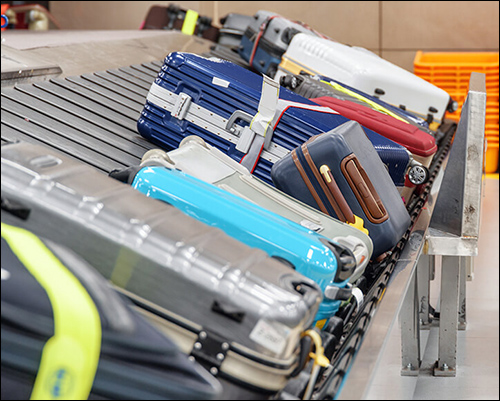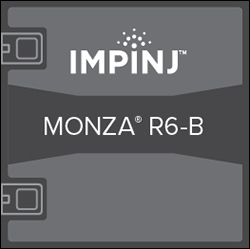Aiming at providing an improved UHF RAIN RFID tag IC for baggage handling, technology company Impinj has announced a new product that it claims will boost sensitivity and accuracy over existing ICs to help airlines and airports more effectively deploy RFID baggage-tracking systems ahead of the International Air Transport Association (IATA)’s recommended practice (RP). The RP 1740C endorses UHF RFID tags on all bag tags manufactured after January 2020.
The Monza R6-B is a new version of the company’s Monza R6 chip that operates with airspace infrastructure already in use to track baggage. The new IC will allow airlines and airports to ensure a better read rate and range with auto-tune functionality and a higher sensitivity than the Monza 5 (see New Impinj Chip Promises Higher Sensitivity, Read Range and Flexibility).
The new chip is being deployed in sample versions with RFID inlay manufacturers, explains Carl Brasek, Impinj’s silicon product management VP, and is aimed specifically at baggage-tracking applications to make it that much easier for companies meet the IATA 2020 goal (see Airline Industry Embraces RFID Baggage Track and NXP, Other Companies Preparing for Influx of RFID Baggage Technology Requests).
Many of the tags now being used to identify and track luggage as it moves through airports contain Monza 5 chips, Brasek says, and they are working well. However, he adds, chips in the R6 family better lend themselves to such applications. Large volumes of bags, often stacked and moving on conveyors, provide challenges for fixed RFID reader systems—which is where the Monza R6-B features provide benefits, Impinj reports.
The R6 chips can be encoded at a rate of 32 bits per 1.6 milliseconds, according to Impinj, and have about a 25 percent longer read range than the Monza 5 or equivalent chips. Auto-tuning enables the IC to automatically retune the antenna every time it is interrogated, thereby making it more responsive, on average, than other chips.
In addition, the company reports, the chip’s Enduro technology features two large contact pads on the chip instead of the traditional four bumps, creating a low-profile design that makes it more durable and less susceptible to breaks as bags are knocked around on conveyors or are being loaded and unloaded. The R6-B also includes 96 bits of EPC memory, enabling the airlines to encode a 10-digit license plate and Julian date in compliance with IATA’s recommended best practices.
“Monza 5 is an older technology, so it’s natural to upgrade,” Brasek says. Considering recent efforts by airlines to ramp up their RFID baggage tagging, he adds, “This is good time to accomplish that.” The new chip has the same features as the R6 but is specifically designed for use in the airspace industry, Impinj explains, as it is built to be more compatible with the existing RFID printer infrastructure that airports and airlines are already using to print and encode predecessor Monza 5-based tags. “There’s already a lot of RFID infrastructure in airports,” Brasek says, “so we chose to modify the R6 to provide a smoother transition with that existing infrastructure [especially printers].”

RP 1740C has been prompting airlines and airports to begin piloting and deploying RFID systems to track bags. This has reduced the incidence of misrouted bags and, in some cases, has provided content for travelers regarding the locations of their bags. Delta Air Lines, for example, has deployed such a system with all of its flights, and provides push notifications via its Fly Delta app so that passengers can view when their bags arrive at the baggage terminal, and at which terminal they can be located.
This is one of the early use cases in which consumers are directly experiencing the benefit of RFID technology, Brasek says. Although RFID tags are commonly being attached to garments and other retail items, consumers are less likely to notice the technology in those cases, or to view any way in which the technology is improving their experience. “This serves as a sterling example of how people can gain from RFID interactions,” he says.
By November 2018, the company expects to be producing the R6-B chips in volume. Impinj anticipates the initial benefits will be for companies still shopping for the best technology to meet the 2020 IATA deadline. “We brought the Monza R6-B to market specifically to meet the IATA requirements,” Brasek says, “and to help airlines more easily find a product that meets their needs.”


